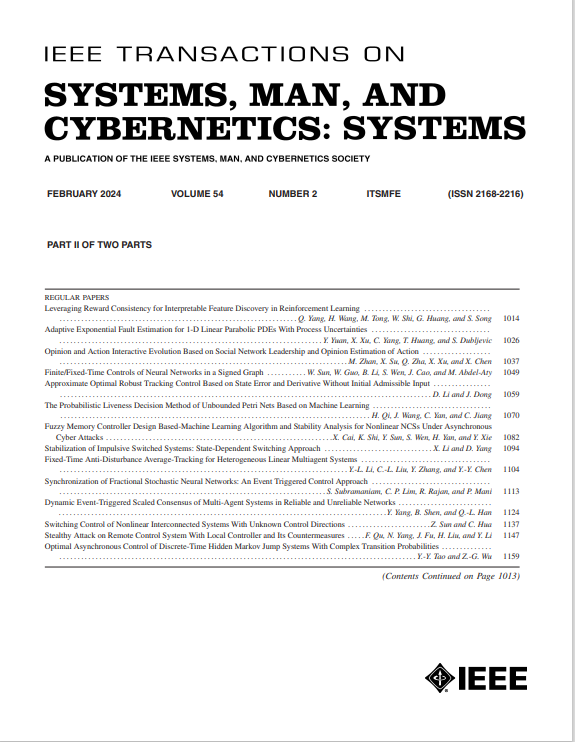基于平衡力矩控制的下肢外骨骼辅助记忆增强步态预测和实时学习
IF 8.7
1区 计算机科学
Q1 AUTOMATION & CONTROL SYSTEMS
IEEE Transactions on Systems Man Cybernetics-Systems
Pub Date : 2025-07-08
DOI:10.1109/TSMC.2025.3580690
引用次数: 0
摘要
下肢外骨骼的控制对辅助行走的有效性起着至关重要的作用,但如何产生参考信号仍然是一个重大的挑战。许多现有的方法涉及离线训练和分类器,或者依赖于预制模型,缺乏支持不同用户和不同步态周期的实时场景所需的适应性。同时,在学习过程中,如何平衡肢体的顺应性与辅助性干预仍然是一个有待解决的问题。为了解决这些问题,本文提出了一种无需分类器的步行辅助实时学习方法,自动适应运动模式的变化。该控制律基于自适应导纳控制和平衡状态,通过直观的参数调整确保学习过程中的稳定辅助,并允许在辅助过程中切换步态。在神经网络中利用选择性记忆递归最小二乘可以快速学习和精确预测人类用户的运动意图,而无需预训练。实验结果表明,该方法在学习半分钟后的预测误差在6°以内,预测提前时间为120 ms,优于经典方法。在不同的控制参数下,辅助性能是一致的,表明有一定的鲁棒性。本文章由计算机程序翻译,如有差异,请以英文原文为准。
Equilibrium Torque Control-Based Lower-Limb Exoskeleton Assistance With Memory-Enhanced Gait Prediction and Real-Time Learning
The control of lower-limb exoskeletons plays a crucial role in determining the effectiveness of walking assistance, but how to generate a reference signal still poses a significant challenge. Many existing approaches involve offline training and classifiers or depend on prefabricated models, lacking the adaptability needed to support diverse users and real-time scenarios with varying gait cycles. Meanwhile, balancing intervention on human limbs between compliance and assistance during learning is still an open problem. To address these issues, this article proposes a real-time learning method for walking assistance without classifiers, automatically adapting to alterations in motion patterns. The control law, based on adaptive admittance control and the equilibrium state, ensures stable assistance during learning with intuitive parameter tuning and allows for switching of gait during assistance. Utilizing selective memory recursive least squares in a neural network enables rapid learning and precise prediction of human users’ motion intention, without pretraining. Experimental results demonstrate that our approach achieves a prediction error within 6° after half a minute of learning with a prediction ahead time of 120 ms, outperforming classic approaches. The assistance performance is consistent despite varied control parameters, indicating a certain level of robustness.
求助全文
通过发布文献求助,成功后即可免费获取论文全文。
去求助
来源期刊

IEEE Transactions on Systems Man Cybernetics-Systems
AUTOMATION & CONTROL SYSTEMS-COMPUTER SCIENCE, CYBERNETICS
CiteScore
18.50
自引率
11.50%
发文量
812
审稿时长
6 months
期刊介绍:
The IEEE Transactions on Systems, Man, and Cybernetics: Systems encompasses the fields of systems engineering, covering issue formulation, analysis, and modeling throughout the systems engineering lifecycle phases. It addresses decision-making, issue interpretation, systems management, processes, and various methods such as optimization, modeling, and simulation in the development and deployment of large systems.
 求助内容:
求助内容: 应助结果提醒方式:
应助结果提醒方式:


